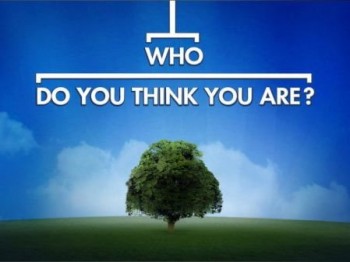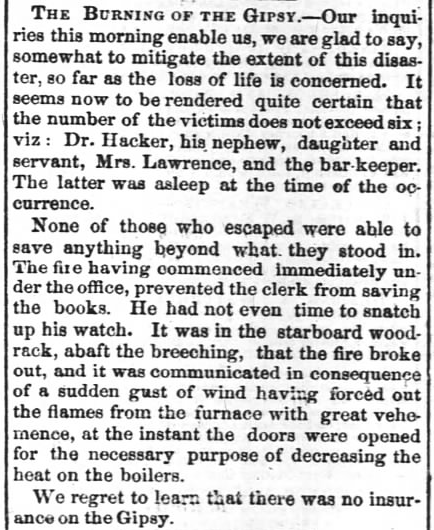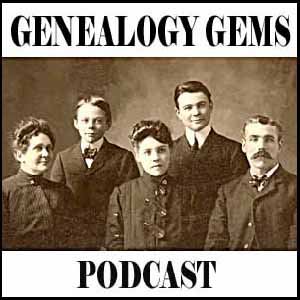Blog


The Burning of the Gipsy – Behind the Scenes of Who Do You Think You Are?
 The final episode of TLC’s first season of Who Do You Think You Are? came with more than just an extra helping of ancestral drama. Along with the end of the season came the welcome announcement that WDYTYA? will return in 2014 on TLC.
The final episode of TLC’s first season of Who Do You Think You Are? came with more than just an extra helping of ancestral drama. Along with the end of the season came the welcome announcement that WDYTYA? will return in 2014 on TLC.
First, the final episode recap: American actor Jim Parsons explored his paternal line and discovered one ancestor who was lost in a tragic accident–and another who narrowly escaped death by guillotine.
The Ancestry.com research team reports, “When we went digging into Jim Parsons’ family tree we found his third-great-grandfather was Jean Baptiste Hacker, a phy sician who was raised in New Orleans but moved to Plaquemine, Louisiana, after starting his medical career. Just a few years later, Dr. Hacker, along with his daughter Leocadie and his nephew, was killed in a tragic fire on board the steamboat Gipsy in December 1854.”
sician who was raised in New Orleans but moved to Plaquemine, Louisiana, after starting his medical career. Just a few years later, Dr. Hacker, along with his daughter Leocadie and his nephew, was killed in a tragic fire on board the steamboat Gipsy in December 1854.”
They documented the accident through an article from New Orleans paper the Daily Picayune (digitized at Newspapers.com and shown here):
Another line of research takes Jim’s ancestry back to France, where he learned one of his forebears was an architect to Louis XV. “The timing of Louis Francois [Trouard]’s appointment is significant: 1787 is only two years prior to the French Revolution. Four architects were executed during the Revolution, and another 25 were imprisoned. Yet Louis Francois escaped Republican retribution….”
“At the Chapelle de la Providence, a structure designed by his ancestor, Jim discovers the startling truth: Louis Francois had good revolutionary credentials, including houseguests such as Benjamin Franklin and John Adams.”
Along with that riveting last episode, TLC just announced it will bring back more of the same next season. On September 10, Digital Spy reported that 2014 will see 10 more episodes. Celebrity guests haven’t been announced yet, so stay tuned! We’ll keep you posted on future developments.
Meanwhile, TV watchers, mark your calendars for the American version of Genealogy Roadshow, the PBS show scheduled to debut next week.

Disaster Preparedness for Genealogists Part 2: Duplicate the Past
 In celebration of National Preparedness Month in the United States, I’m running a four-part post on securing your family history archive and research against disasters. Last week I talked about assessing and prioritizing your original family artifacts, photographs and documents. This week’s tip:
In celebration of National Preparedness Month in the United States, I’m running a four-part post on securing your family history archive and research against disasters. Last week I talked about assessing and prioritizing your original family artifacts, photographs and documents. This week’s tip:
DUPLICATE THE PAST. There’s no true substitute for an original family Bible, but if it’s lost, you at least want to have a copy. Scan your original photos, documents, and other flat artifacts—including the important pages of that Bible. While you could carefully use a flatbed scanner, consider a portable scanner or a mobile scanning app like Genius Scan or Scanner Pro.
Next, photograph dimensional family artifacts like artwork, handicrafts, clothing, military and school memorabilia, etc. Use a regular digital camera or the camera on your phone or tablet/iPad. Make sure you label the photos by using the metadata fields in digital files or by printing them out and captioning them in an album. Consider using the Heirloom Inventory Kit developed by the folks at Family Tree Magazine to create an archival record of your artifacts with images, stories and more.
Next week, we’ll tackle a third topic: preserving original documents, photos and heirlooms.

Low Tech and High Tech Can Play Happily in the Genealogy Sandbox
 Listen in as we solve a family history mystery with high-tech and low-tech tools in the newest episode of the free Genealogy Gems Podcast, episode 159.
Listen in as we solve a family history mystery with high-tech and low-tech tools in the newest episode of the free Genealogy Gems Podcast, episode 159.
Also in this episode, Genealogy Gems Contributor Sunny Morton discusses where to begin with African-American research with Dr. Deborah Abbott, and we explore newly available Canadian records.
And we wrap the episode with my thoughts on the value of work that we want to pass on to our kids and Grandkids as a family history legacy.




